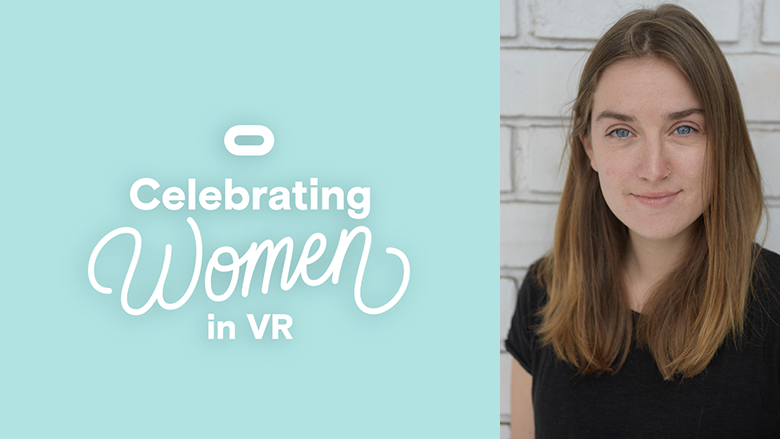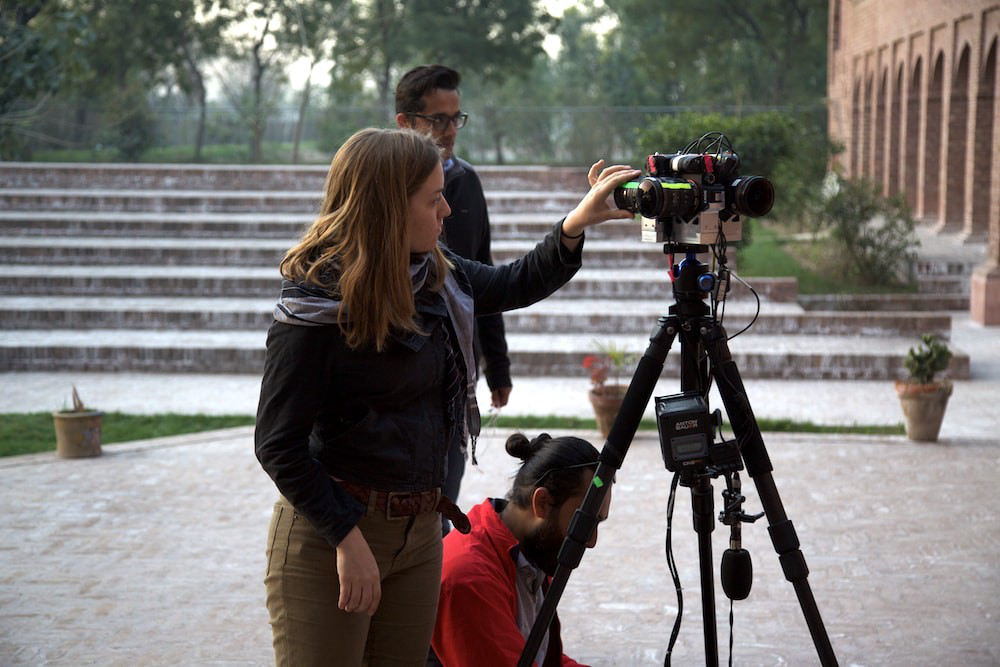It is international Women’s Month and the VR community is celebrating it in every way possible. Women play a large role in every industry, and that is the same when it comes to mixed reality technologies. On the Oculus TV app, you can go view a film titles “Her Life, Her Story” for a spotlight on International Women’s Day. On the Oculus Store, there is going to be some awesome featured apps coming out this weeks.
Yesterday, Oculus did a Q&A with one of the most powerful XR minds in the world, Kate Wurzbacher.
You can check out the full story on the Oculus Blog site, or you can check out the Q&A section down below for your reading convenience.
Full Oculus Interview
How did you get your start in the tech industry?
Kate Wurzbacher: I began working in 2D film as a camera assistant. A cinematographer I worked with was shooting a 360° music video, Björk’s “Stonemilker.” Through that experience, I was introduced to a VR content company, VRSE, which would become Within and Here Be Dragons. There was a need to quickly build and iterate 360° 3D camera systems, and I was able to call on my background of working with cinema cameras to help make these rigs better suited to the field. This evolved into a career that was part cinematography and part tech—but always driven by the need to make tools that didn’t yet exist.
Tell us about your current role.
KW: I work for StoryFile, a company that uses AI and natural language processing to let users have a conversation with a previously-recorded subject. I’m in charge of a constantly evolving portable volumetric camera rig that allows us to also capture these subjects for AR and VR. To my knowledge, there aren’t many others trying to capture volumetric data on a scale of hours instead of minutes. There’s also a lot of work we’re doing on how we interact with these digital captures of real people in virtual spaces, as well as the ethics of capturing this data. We never manipulate the content of the data we capture—the subject will always respond in their own words, and their 3D likeness will not be used for anything else. I think this is a unique approach in the current field of digital humans and one that I’m proud to be a part of.

Who’s your favorite figure from women’s history?
KW: Completely not tech related—I’ve always loved a good woman warrior. Boudica was a Celtic queen who led a revolt against the Romans and pushed their occupying forces out of Britain, and that’s just bad ass.
How do you see yourself making history?
KW: I’d like to think that I’m part of a current women’s movement that’s bigger than the individual and more about building communities in the emerging immersive space in which everyone feels not just comfortable but encouraged to participate. I also think we’re at a time where we recognize that all marginalized groups need to work together. As women, we’ll only make our movement stronger by opening the doors to all who feel that the status quo is not working for them.
If you could give one piece of advice to a young girl considering a career in tech or the arts, what would it be and why?
KW: Tech and the arts are complementary, and I would urge girls to explore both fields and find their own way to combine the two. If you don’t see what you want, make it. Technology is flexible in that it can be utilitarian, entertainment, or somewhere in between. I think that in between space is the most interesting, and the doors are wide open for new innovators.
How do you see women pushing the state of the art forward in the fields of augmented and virtual reality?
KW: Women in the fields of augmented and virtual reality have really been pushing boundaries in terms of defining their roles. I see so many female creators that mix their storytelling drive with strong technical backgrounds and don’t feel the need to fit in one box. I think this enhances the content that’s being put out because it encourages more collaboration on all fronts.
Where have you encountered support and advocacy for women and other underrepresented groups in the VR industry?
KW: I’ve been fortunate enough to work for two companies with strong female representation. Seeing yourself as a woman reflected in leadership roles is encouraging because it sends a message that gender will not hold you back in reaching the position that you are best suited for. The VR industry is unique in the sense that, although the technology has been around for decades, this push in content creation is creating a new field from the ground up. We have the potential to write our own rules in regards to representation of all marginalized groups, and I hope we continue to build the community in this way and not fall into complacency.
What concrete steps can people take to help make the tech industry a more inclusive and welcoming space?
KW: Take steps to actively seek out new talent. The most diverse people are probably not the most visible—at least as of now. Also recognize that those coming from different backgrounds and fields don’t necessarily approach problems in the same way that you do, and embrace that as something that makes your team stronger.
How do you go about designing for a diverse audience and/or ensuring representation of strong women characters in your own work?
KW: The best way to create diverse representation in your work is to build teams that reflect that. I think teams and collaborators from different backgrounds bring a certain depth to their work that can’t be replicated by someone designing an experience solo. I also think we sometimes downplay the process of peer review. Peer review can raise flags and point out issues in representation that might not be visible to you because of your specific background. The earlier this happens in the creative process, the more likely you are to end with a piece that reflects the diversity of our society and resonates with a wider audience.

What’s your favorite piece of AR/VR content and why?
KW: This isn’t necessarily a creative piece, but I’ll never tire of using Google Maps in VR. I enjoy anything that plays with space and scale, and so the ability to view maps and locations from different perspectives is so enjoyable. On a more creative note, I loved Reggie Watts’ “Runnin’.” On a technical note, that’s because it embraced some of the visual artifacts of volumetric capture by presenting the dancers in a non-photorealistic manner. On the experiential side, it was just pure fun—it created a unique virtual space filled with visual and audible stimuli where movement is encouraged. I could have gone back in several times.
Where do you see yourself in five or 10 years?
KW: I have a job that didn’t even exist five years ago, in a field I was pretty ignorant of 10 years ago. Things have been moving so fast in this space that it’s hard to predict specifics, but the general goal for me is the same: use emerging tech in creative and boundary-pushing ways. I see myself leading my own projects, with an emphasis on using technology to create communities and collaboration.
Anything else you’d like to share with our readers?
KW: I encourage everyone to not lose your sense of play—there’s so much room to experiment, to constantly create even if it’s just for you. It doesn’t have to be a game-changing project in order to have creative value.






























